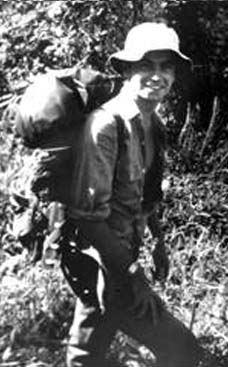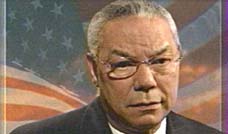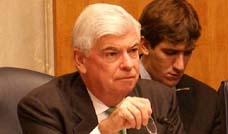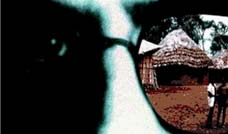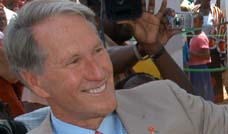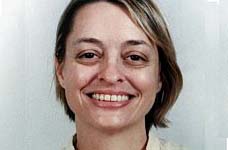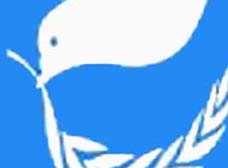
"In the end, Mr. Puryear's constructions, though entertaining and generally pleasing, leave me wanting. Mr. Puryear's sculptures, no matter how ambiguously abstract, representational, functional, or organic, possess the utilitarian readiness of Shaker objects. They suggest an inner need to be useful. But they can also be decorative, closed off, and aloof as if, as conceptual artworks, they need not be purposeful or engaging. Somewhere between well-crafted object and artwork, Mr. Puryear's sculptures lose their way. They can get your mind racing with associations. But they hint at much more than they deliver. And the thing they refer to most is other sculpture or the promise of sculptures they don't yet have the power to be." Award winning sculptor Martin Puryear served as a Peace Corps volunteer in Sierra Leone in the 1960's where he met and studied with traditional craftsmen, who taught him to work wood with hand tools.
Lance Esplund writes: The American sculptor Martin Puryear, the subject of a 30-year retrospective at the Museum of Modern Art, makes spare, sometimes elegant objects that are ambitiously constructed yet formally glib
Formal Fantasy
Museums
By LANCE ESPLUND
November 8, 2007
The American sculptor Martin Puryear, the subject of a 30-year retrospective at the Museum of Modern Art, makes spare, sometimes elegant objects that are ambitiously constructed yet formally glib. Mr. Puryear (b. 1941) borrows from the traditions of African, minimalist, and modernist sculpture, and from woodworking, ship building, and basket weaving. He is a talented craftsman a postmodern tinkerer, punster, and modelmaker. And his large, enigmatic, mostly wood sculptures carved, bent, sanded, or woven, and simultaneously threatening and goofy resemble giant cages, birds, baskets, and seedpods, as well as burial mounds, ship hulls, dinosaurs, and shelters.
Organized and affectionately installed by the chief curator in MoMA's department of painting and sculpture, John Elderfield, Mr. Puryear's retrospective of 45 sculptures (like MoMA's recent show devoted to Richard Serra) is clearly what the museum had in mind when its galleries were redesigned and expanded to cavernous proportions. Some of Mr. Puryear's artworks are as big as huts or catapults; others such as the narrow, suspended, and wobbly "Ladder for Booker T. Washington" (1996) ascend multiple stories. MoMA has given plenty of air and space to these and to other sculptures, which respond to one another with familial, casual poise, and which accentuate the inspired reach of Yoshio Taniguchi's second-floor atrium. But scale, as this show demonstrates, isn't everything. Nor is it enough that an artist is technically adept at his craft.
The sculptures created by Mr. Puryear are often favorably compared to the masterpieces of Jean Arp, Brancusi, and Le Corbusier, as well as to the best of minimalism. And his refined, lithesome objects often refer to or quote from great art. As a whole, however, Mr. Puryear's sculptures, conceived then executed, feel like big finished projects, rather than artworks that have been nurtured to fruition through the coupling of matter with design. Mr. Puryear's constructions tend more toward the ironic and reductive paringdown or emptying-out of art an act practiced by conceptual artists than they do toward the subtlety of expression and economy of means evident in the best modernist sculptures.
Mr. Puryear does not, in the tradition of Arp, create organic beings that are conflations of flora, fauna, and mineral; he does not, in the tradition of Donald Judd, provide us with beautifully stark spatial intervals; and he does not, in the tradition of Brancusi, distill forms to essences. Mr. Puryear is basically an illustrative sculptor who meticulously handcrafts and magnifies to human-scale, or larger, rather simple visual ideas. Sometimes, those ideas are compelling as in "Maroon" (198788), a tar-covered wire mesh blob that pushes down brutishly, like a giant shoe squashing a bug, yet that also expands and hovers airily. But many of the sculptures feel vacant, overscaled, and underwhelming as if you were confronted with Noah's Ark, sans Noah, the animals, and the flood.
Certainly, Mr. Puryear is familiar with past works of art. But to refer to those works is not the same as to reinvent them. "Ad Astra" (200607), meaning "to the stars," is a case in point. "Ad Astra" is an upended horseless wagon overloaded with a 6-foot-wide polyhedron. The sculpture is a rather humorous, heavy-footed oddity that was probably fashioned specifically for MoMA's atrium. In it, the wagon's hitch rises at a steep angle 63 feet into the museum's stratosphere. Like "Ladder for Booker T. Washington," "Ad Astra" is, no doubt, related in the artist's mind to Brancusi's "Endless Column."
But just because a work of art rises high does not mean it has liftoff. In "Ad Astra," I presume that Mr. Puryear is also referring to, or quoting from, Albrecht Dürer's engraving "Melancholia." In Dürer's print, a ladder rises and spirals out of a polyhedron. The ladder twists like a double helix, so that its front and back, interchangeable and reversible, are one and the same. The turn of Dürer's ladder, which rotates the polyhedron, is a metaphorical opening in the space whereas, in contrast, Mr. Puryear's endless hitch goes on nearly forever, aimlessly, and to destinations unknown.
Some of Mr. Puryear's works are more engaging than others. Mild-mannered, sometimes witty conflations and conundrums, almost all of his sculptures can be attractive initially: The black pine "Bask" (1976) is a long, low swell that rises to a knife edge and then rolls like a whale. The human-scaled dark and polished "Self" (1978), inclined slightly and bulging, is nose, fish, phallus, and elbow. "Sharp and Flat" (1987), a hatchet-shaped polyhedron, launches like a rocket and comes down as hard as a cleaver. "Lever #1" (198889), gliding gracefully, is a giant, scrunched hatbox-turned-boat-turned-swan. And "A Distant Place" (2005), in which a 12-foot-long unicorn horn shoots from out of a mass of gnarled wood, suggests classical temple, cancerous growth, and childlike fantasy.
Yet, for all their associations, the artworks lose momentum en masse, and they yield diminishing returns: They are sculptures in the round, but more often than not, they have been conceived by the artist from a single viewpoint. And, although there are exceptions, walking around them offers very few surprises. Some of his sculptures, such as the beautifully balanced amalgamations of animals and tools in "Untitled" (19972001) and "Le Prix" (2005), still have a kick when viewed in profile. But other works, pared-down to weightless fragments, hardly warrant a look from any angle. The round "Cerulean" (1982) from a series of circular wood pieces that are hung on the gallery walls is about as exciting as a bicycle tire.
In the end, Mr. Puryear's constructions, though entertaining and generally pleasing, leave me wanting. Mr. Puryear's sculptures, no matter how ambiguously abstract, representational, functional, or organic, possess the utilitarian readiness of Shaker objects. They suggest an inner need to be useful. But they can also be decorative, closed off, and aloof as if, as conceptual artworks, they need not be purposeful or engaging. Somewhere between well-crafted object and artwork, Mr. Puryear's sculptures lose their way. They can get your mind racing with associations. But they hint at much more than they deliver. And the thing they refer to most is other sculpture or the promise of sculptures they don't yet have the power to be.
Until January 14 (53 W. 53rd St., between Fifth and Sixth avenues, 212-708-9400).






